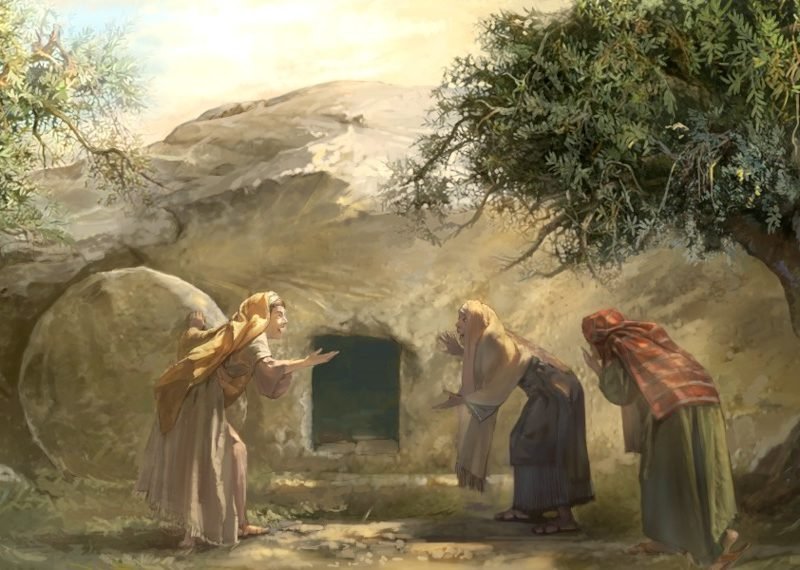Between the evangelist Luke and his mentor Paul, the two provide roughly 1/4th of all Christian scripture. Their perspective is unique and constitutive for any serious believer. While Paul evidently felt no need to narrate his encounter with the Risen Jesus, Luke most certainly did. Luke’s Gospel chapter 24 is a masterwork of resurrection, displaying very clearly Luke’s desire to include the central Easter material already circulated by Mark and Matthew but also his ability to add keen details not at all included in those works. Writing somewhere around 85 AD, Luke bridges the oldest original resurrection materials with newer insights stemming from the later decades of the 1st century.

Today we’ll stick with Luke’s parallel (mostly) Easter morning account. Take a moment to read it, Luke 24:1-12. Your study bibles will note the now-familiar. Early Sunday morning. A bunch of Maries with others added now. Spices to properly complete the hasty burial during Passover. Stone already rolled away. Resurrection docents in dazzling Officine Generale white. Men don’t believe what women tell them from the heart. Peter’s morning 5k. Linen clothes neatly folded. But Luke flavors the tradition with his own unique contributions also! The women go inside the tomb to look more closely, and upon visiting with the angelic docents, do not flee in utter terror but instead go straight to the disciples and others who disrespect their eyewitness testimony as idle women’s talk. (Luke’s tone here comes straight into English with as much dripping sarcastic judgement upon the men as you think; Luke was a 1st century arch-feminist if you closely examine his entire account!) Instead of the Markan command to go to Galilee, here the women are invited to reflect upon Jesus’ earlier teachings from Galilee, and they comprehend instantly what Jesus predicted has, against all reason, come true exactly as He said it would. For Luke Jerusalem is the center of the world and ground zero of God’s salvific plan, so side trips to Galilee are not required! Finally several ancient scrolls lack 24:12, tantalizing us with the possibility that a later Christian scribe added it to align with the Johnannine 20:3-10 account as perhaps Mark’s epilogue was added later. This is going to be interesting!
- While I find the possibility of generational editing and inter-gospel community comparison extremely edifying, some may find it disturbing. Have you ever reflected upon scripture in this fashion? Have you ever taken time to consider the life context, personality and congregational identity of the various evangelists conveying the resurrection accounts?
- How does Luke’s account resonate with you, or you with his account?
- How does this reflection and this scripture passage inform, shape or challenge your faith in Jesus?